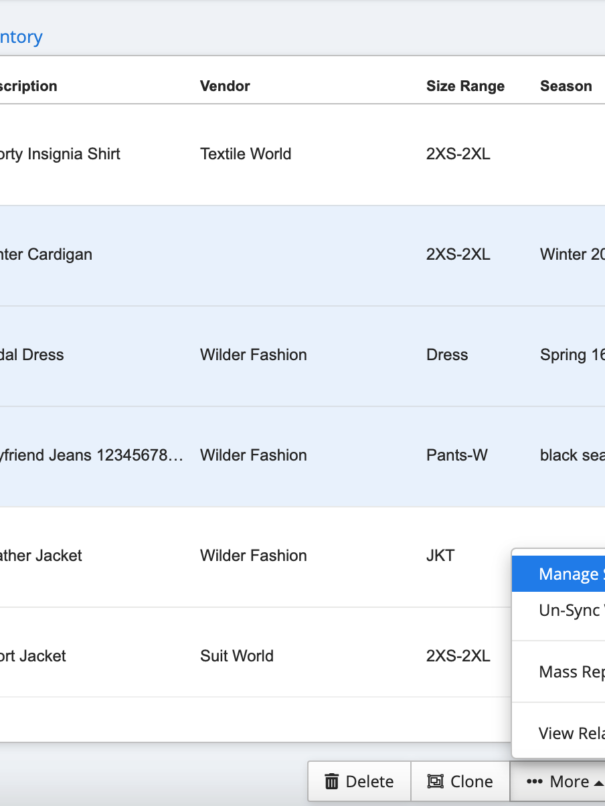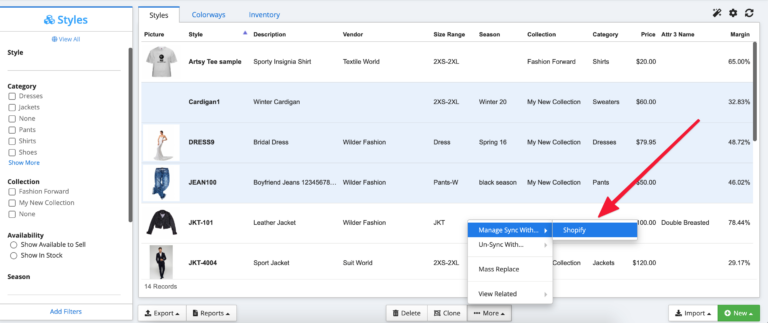The fashion industry is in a difficult position, as increased inflation rates put pressure on apparel businesses and have uncovered supply chain challenges like never before. Raw materials, labor, and transportation are becoming more expensive as costs associated with clothing production mount – leaving apparel businesses facing growing uncertainty as we finally leave the constraints the Covid-19 pandemic imposed on all industries.
The major issues currently plaguing the fashion industry may have a more severe impact than initially anticipated, driving up costs for customers while reducing sales revenue for businesses. However, things are not that dire. To combat these challenges, companies can explore supply chain solutions that enable them to operate more efficiently while maintaining quality standards.
One solution is implementing apparel supply chain software that helps streamline processes such as inventory management, production planning, and order tracking. Additionally, establishing a flexible system for cost control and regularly analyzing data are essential tools for managing inflation in the fashion industry’s complex economic environment.
In this article, we will delve deeper into the impact of inflation on the fashion industry and discuss actionable strategies to address these supply chain challenges.

What is Inflation and How Does it Impact the Apparel Industry?
Inflation is a term that refers to the general increase in prices of goods and services over time. It’s caused by various factors, such as government policies, economic growth, and changes in consumer behavior. According to recent reports, the United States is currently experiencing a severe battle with inflation. In fact, the inflation rate hit a staggering 9.1% in July, marking the highest 12-month increase in over four decades.
This unprecedented surge in prices has left many consumers struggling to keep up with the rising cost of goods and services, including those in the apparel industry, and sadly, we can’t see things changing in the foreseeable future.
In the apparel industry, inflation can have a significant impact on the supply chain. The cost of producing clothing can increase significantly during periods of inflation due to rising expenses like labor, transportation costs, and energy costs. And supply chain inflation surges can significantly impact the way apparel businesses navigate the industry.
Unfortunately, inflation spikes can lead to higher prices for consumers and lower profits for fashion brands. In addition, inflation can also affect consumer purchasing power, leading them to opt for cheaper alternatives or delay purchasing altogether. To mitigate these challenges, fashion brands must implement strategies such as efficient inventory management systems and cost control measures while maintaining quality standards.
Ultimately, it’s crucial for companies in the apparel industry to stay aware of inflation trends and be proactive in adapting their supply chain management strategies accordingly.
How ERP Software Can Help you Fight Inflation
An enterprise resource planning (ERP) system is a software solution that helps businesses manage their day-to-day operations, including accounting and inventory management, and adds levels of resilience, helping businesses plan out strategies with which they can combat inflation. As inflation continues to impact the global economy, implementing an ERP system plays a crucial role in helping companies stay competitive and profitable, helping them deal with any supply chain challenges that arise. It can do the following:
1. Strategic Planning
As a fashion brand, it’s important to have a plan in place to combat the impact of inflation on
your business. The first step is to review your current processes and identify areas of the supply chain operations that can be updated or streamlined for greater efficiency. By doing so, you can build flexibility into your operations to better adapt to changes that may occur due to inflation. To prepare for potential scenarios that could affect your business, consider conducting ‘what-if’ analyses that include factors such as wage increases, rate spikes for raw materials or other goods, supply chain disruptions, and delays.
Understanding how each scenario could impact your cash flow will help you take proactive measures to minimize any negative effects. With this knowledge in hand, you can create a financial plan that accounts for potential setbacks and prepares your apparel business for success even amidst challenging economic conditions.
2. Inventory Management
Effective inventory management is crucial for the financial success of any apparel business, and with the right tool, you can effectively mitigate supply chain issues and ensure you are always operating soundly. By monitoring inventory metrics, you can ensure that you have enough stock to fulfill customer orders while avoiding high storage costs. Additionally, analyzing your inventory levels helps you determine when and how much stock to order, as well as how quickly you can sell your current inventory, drastically reducing storage costs.
Implementing an ERP system can further enhance your inventory management by addressing common issues such as overstocking and understocking. Overstocking leads to higher overhead costs, while understocking results in longer customer fulfillment times. With the help of an ERP system, you can streamline your inventory processes and optimize your stock levels for maximum efficiency and profitability.
Plus, better managing your inventory will help you stay on top of high consumer demand – ensuring you always have trendy items ready to be shipped straight to shoppers.
3. Strategic Spending
It’s important to identify areas where you can cut costs and implement more efficient processes to optimize your resources.
Take a closer look at your current strategy and analyze the supply chain challenges you are facing; are there any redundancies or inefficiencies that could be eliminated? By integrating an ERP system, you can streamline tasks like data entry and save valuable time and money. Additionally, It’s important to approach each business process with transparency, from sourcing materials to delivering finished products to customers. By implementing ERP in your daily business operations, you can enhance visibility and traceability in your supply chain.
Another key aspect of managing your supply chain is building strong relationships with suppliers and vendors. Cultivate open communication channels and collaborate on solutions that benefit both parties. This can lead to more favorable pricing and better quality materials, ultimately improving the bottom line.
4. Seamless Automation
With an ERP system, you can reduce errors caused by manual data entry and free up your employees’ time to focus on other important aspects of your business.
Imagine saving thousands of hours of work across your finance teams and other departments. That’s more time to tackle crucial tasks that drive productivity and growth. Plus, with less labor required, your costs will decrease, making it easier to combat inflation.
Investing in technology and tools like an ERP system is a smart move for any business looking to stay competitive in today’s market. Don’t fall behind – automate and reap the benefits.
5. Better Control Over Spending
When it comes to battling inflation, financial viability is key. Cash management plays a significant role in ensuring your business remains financially stable and can weather the storm of rising prices.
Keeping track of all financial activity within your organization can be a daunting task, but with an ERP system and accounting software like ApparelMagic and QuickBooks Online, it becomes significantly easier. This powerful combination allows you to keep tabs on every transaction – inbound or outbound – from one hub. With real-time tracking and accurate information at your fingertips, you can easily monitor your company’s balance sheet and avoid any unpleasant surprises.
By implementing a robust cash management module into your ERP system, you’re taking proactive measures to protect your business against inflation. Don’t let rising prices catch you off guard – take control of your finances today with an ERP system that includes this critical feature.
Conclusion
The fashion industry is no stranger to the challenges of inflation. Rising costs and falling sales revenue can put immense pressure on businesses, making it more important than ever to find ways to stay competitive.
That’s where an ERP system comes in. By streamlining operations and maintaining quality standards, ERP systems can help apparel companies weather the storm of inflationary pressures and mitigate future disruptions or challenges in the supply chain. With inventory management tools that optimize stock levels and reduce storage costs, businesses can keep their bottom line in check and always keep up with customer demand, all while staying agile and responsive to changing market conditions.
It’s not just about cutting costs though – strategic spending and cost control measures are key to improving profitability and staying ahead of the curve. With automation and better control over spending through cash management, businesses can unlock new efficiencies and position themselves for long-term success.
If you’re feeling the pinch of inflation in the fashion industry, take action with an ERP system that’s tailored to your unique needs. With the right tools at your disposal, you can navigate even the toughest economic conditions and emerge stronger than ever before.









